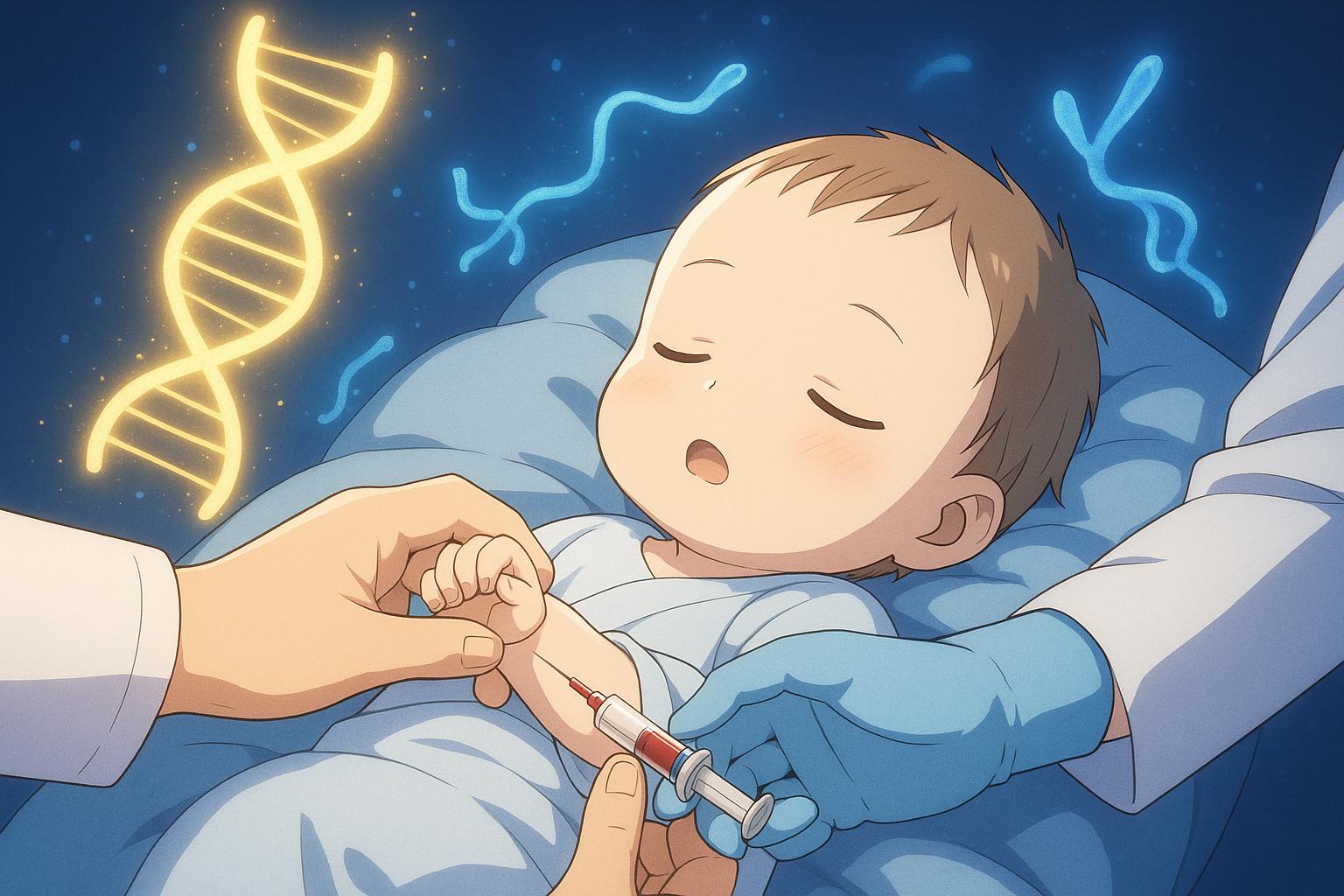The development of a groundbreaking blood-based test offers new hope for the swift diagnosis of children suffering from rare genetic disorders. Researchers at the University of Melbourne have designed a method that leverages the analysis of proteins in specific blood cells, which could not only hasten the identification of such disorders but also provide crucial treatment options sooner than current methods allow.
Rare genetic disorders encompass a wide range of conditions, including cystic fibrosis and diseases linked to mitochondrial dysfunction. Diagnosing these disorders has often been a painstaking process. Dr David Stroud, a co-author of the study, explained that while genomic testing has significantly improved diagnostic rates, it remains effective in only 30-50% of suspected cases. This can leave families in a state of uncertainty as they embark on a "diagnostic odyssey" — a protracted journey through various testing protocols over months or even years. The strain of this lengthy process is further compounded when invasive procedures, such as muscle biopsies, become necessary, particularly affecting young patients who must endure general anaesthesia.
In their research, published in the journal Genome Medicine, Stroud and his colleagues propose a complementary approach to genomic testing. By examining the proteins produced in response to specific gene alterations, this method promises a more comprehensive view of which genetic mutations are pathogenic, thereby expediting the diagnostic process. “Since genes are the instructions to make proteins, we use this information to ascertain which genetic changes lead to damages and which are benign,” Stroud commented.
The new proteomic test could potentially boost diagnostic accuracy to between 50-70%, addressing many cases where genomic testing alone falls short. Notably, this innovative method requires merely 1ml of blood from a newborn, greatly reducing the need for more invasive techniques. While primarily designed for mitochondrial diseases, Stroud mentioned its applicability extends to approximately half of the 7,000 known rare diseases, underscoring its utility across a broader clinical landscape.
The financial implications of this test are also significant. Since it is not restricted to specific disorders, it is expected to be more cost-effective, ultimately benefitting both patients and the healthcare system by minimising unnecessary tests. A definitive diagnosis can illuminate care pathways, paving the way for possible treatments and aiding parents in making informed decisions about future pregnancies.
The research has garnered praise from experts in the field. Michal Minczuk, a professor of mitochondrial genetics at the University of Cambridge, articulated the importance of the study, asserting that it represents a "very significant step forward in diagnostic practices." By introducing a rapid and minimally invasive method, this advancement can transform patient care and empower healthcare providers with better tools for genomic medicine.
In parallel to these advancements, organisations like the Centers for Disease Control and Prevention (CDC) continue to innovate in the realm of newborn screening. Recent developments by the CDC involve tests that screen for conditions such as homocystinuria (HCU), where elevated homocysteine levels in blood samples enable quicker diagnoses and interventions. Such proactive measures also emphasise the critical role early testing plays in improving infant health outcomes across the board.
Emerging technologies in this field, including machine learning combined with sequencing techniques, are further enhancing the accuracy of newborn screenings, diminishing the likelihood of false positives, and alleviating the stress associated with unnecessary further testing. Major breakthroughs in rapid genome sequencing, exemplified by records in speedy diagnoses of rare genetic diseases, further highlight the evolving landscape of neonatal diagnostics.
The ongoing commitment to refining diagnostic methodologies signals a promising future for patients and families affected by rare genetic disorders, ensuring they receive timely care and empowering them with knowledge that can significantly impact their lives. As researchers continue to push the boundaries of genomic and proteomic understandings, the hope is that these innovations translate into better outcomes for vulnerable populations.
Reference Map:
- Paragraph 1 – [1], [2]
- Paragraph 2 – [1], [6], [5]
- Paragraph 3 – [1], [2], [4]
- Paragraph 4 – [1], [5]
- Paragraph 5 – [3], [7]
Source: Noah Wire Services
